A cooling fan helps move air through the radiator when the vehicle is stopped or moving slowly. An electric fan motor connected to a plastic fan blade located directly behind the radiator which is controlled by a coolant temperature sensor. This engine temperature information is utilized by the computer which signals the control relay to send power to the cooling fan. When the air conditioner is used, the cooling fan automatically activates to remove heat from the condenser regardless of engine temperature. To inspect a cooling fan start with ignition key off. By hand, spin the fan blade, it should "freewheel", if the fan motor does not spin or is hard to turn, it has failed and replacement is required. If the fan motor fails to activate electrically check the cooling fan fuse and relay and replace as needed.
Tools and Supplies Needed
- Socket set
- Wrench set
- Replacement cooling fan
- Fluid catch basin
- Protective eyewear and gloves
- Hose clamp tool or channel locks
Best Practices
- Check the main fan blade mounting nut for tightness.
- Electrical connectors must free from dirt and debris to ensure proper current flow.
- Allow the engine to warm up to operating temperature until the cooling fan turns on. If the fans turn "ON" and the engine overheats anyway, check for engine overheating
- Use caution while replacing the cooling fan, if radiator damage occurs it must be replaced.
Let's Jump In!
Drain the cooling system
and locate and disconnect the electrical connector for the cooling fan.
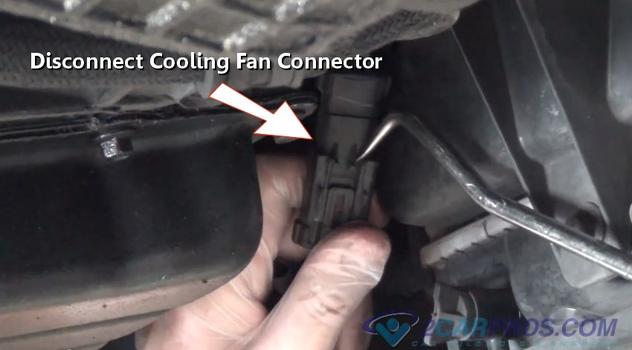
Remove the lower mounting bolts that attach the fan to the radiator. (Note: Some
vehicles have alignment dowels which need not be removed.)
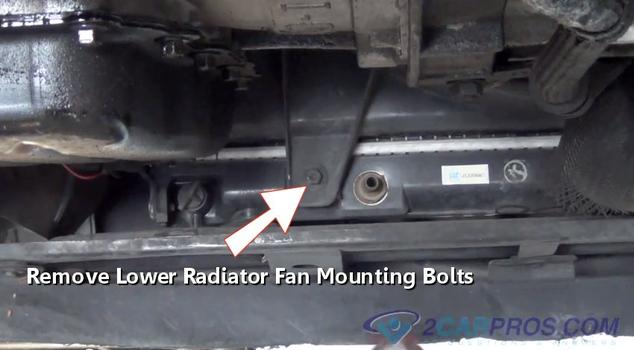
Loosen mounting bolts or clips to remove any plastic shielding that will inhibit
the replacement of the cooling fan.
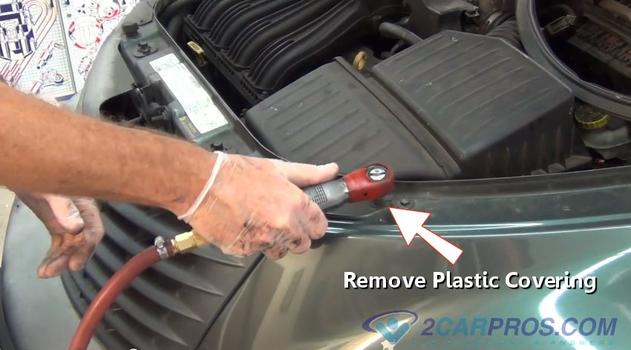
Once all mounting bolts have been removed, lift the plastic covering from the
vehicle.
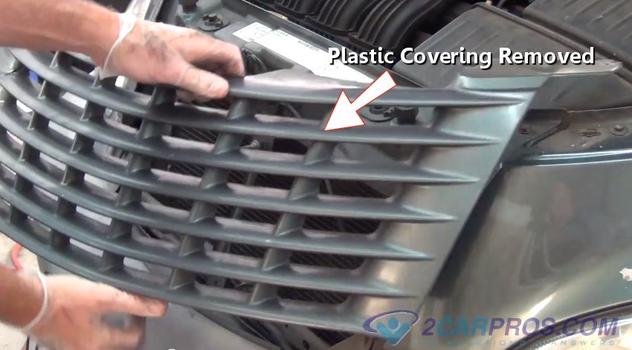
Lift the core support from the vehicle, a hood cable release could be mounted
to this support.
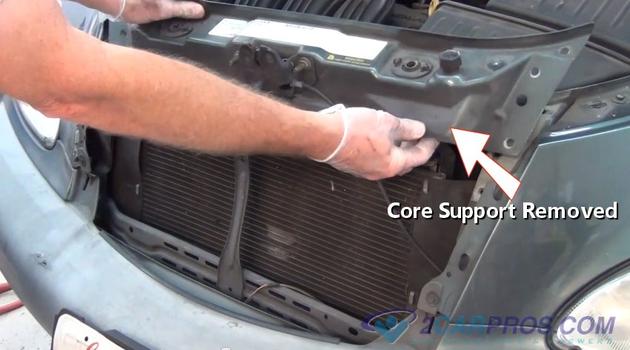
Watch the Video!
Please watch this video of the job being done, then continue down the guide to glean additional helpful information.
Loosen the upper radiator hose clamp using a hose clamp tool or channel locks.
Grasp the hose and twist using a hose pick or screwdriver to assist.
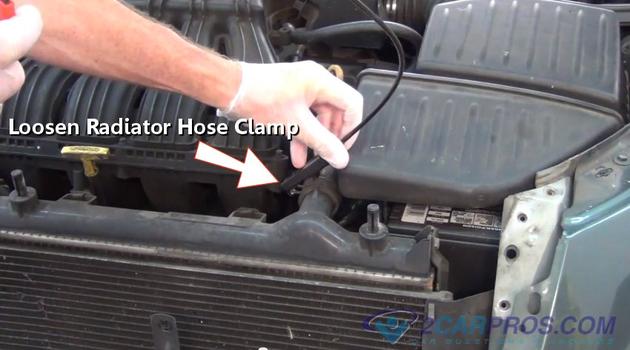
Undo the mounting clips or bolts that hold the air intake in position, this step
needed only if the air intake is blocking the removal of the cooling fan.
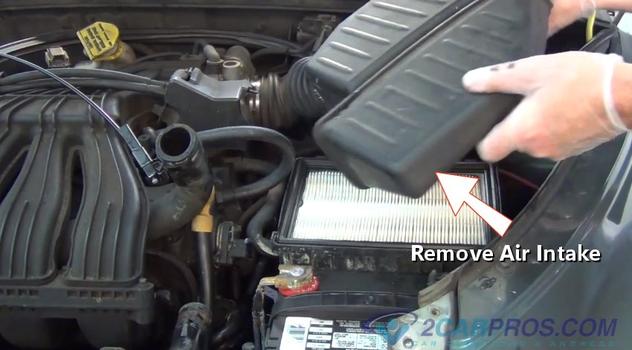
Loosen and remove the upper mounting bolts from the cooling fan radiator mount.
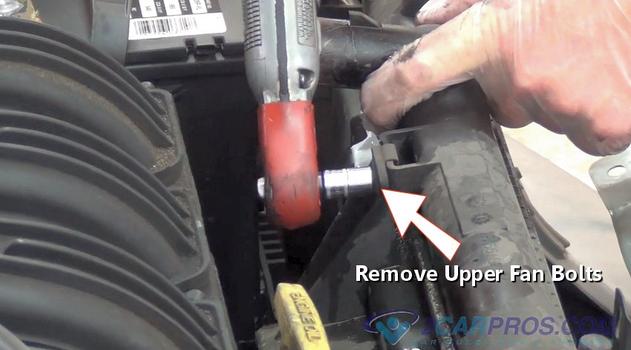
Recheck that all mounting bolts and clips have been removed, gently lift the
cooling fan from the engine bay, be careful when performing this action as to not
damage the radiator cooling fins.
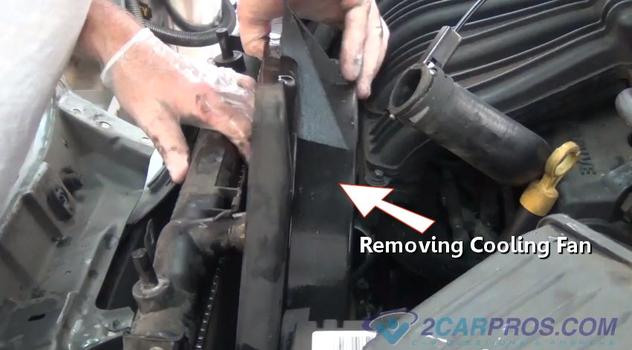
Compare the old fan to the replacement cooling fan. Inspect mounting tabs and
electrical connector to ensure proper installation, some cooling fan designs feature
the replacement motor separate.
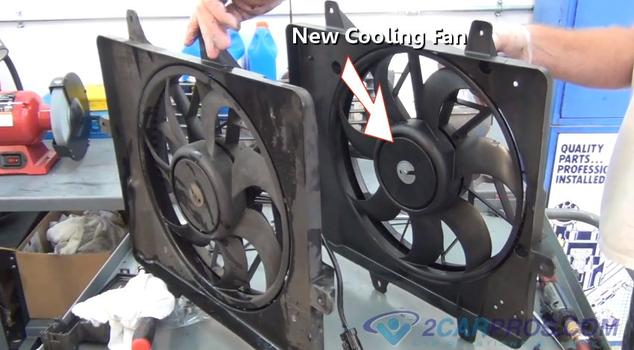
Gently lower the new cooling fan down into the engine bay and onto the radiator.
Again, use caution when performing this as not to damage the radiator cooling fins.
Reinstall all mounting bolts and refill cooling system and check the coolant reservoir,
add coolant to the radiator
as needed. Once these steps have been completed, simply reverse the order to reassemble.
Start the engine and turn the air conditioner "ON", or wait until the engine reaches
operating temperature to check for fan operation and recheck coolant level.
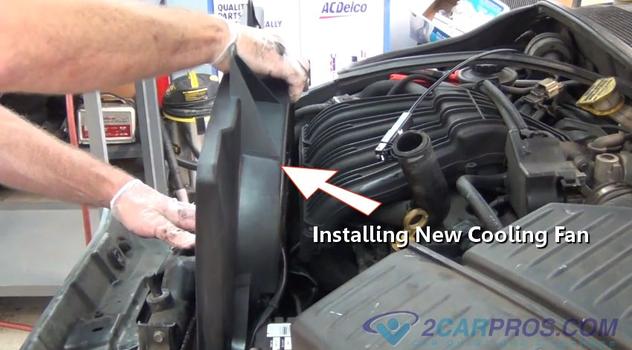
Questions?
Our certified technicians are ready to answer radiator cooling fan replacement questions for free. We hope you saved money and learned from this guide. We are creating a full set of car repair guides. Please subscribe to our 2CarPros YouTube channel and check back often for new videos which are uploaded regularly.